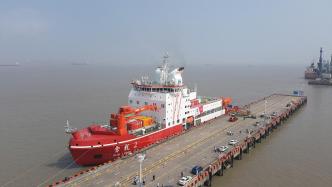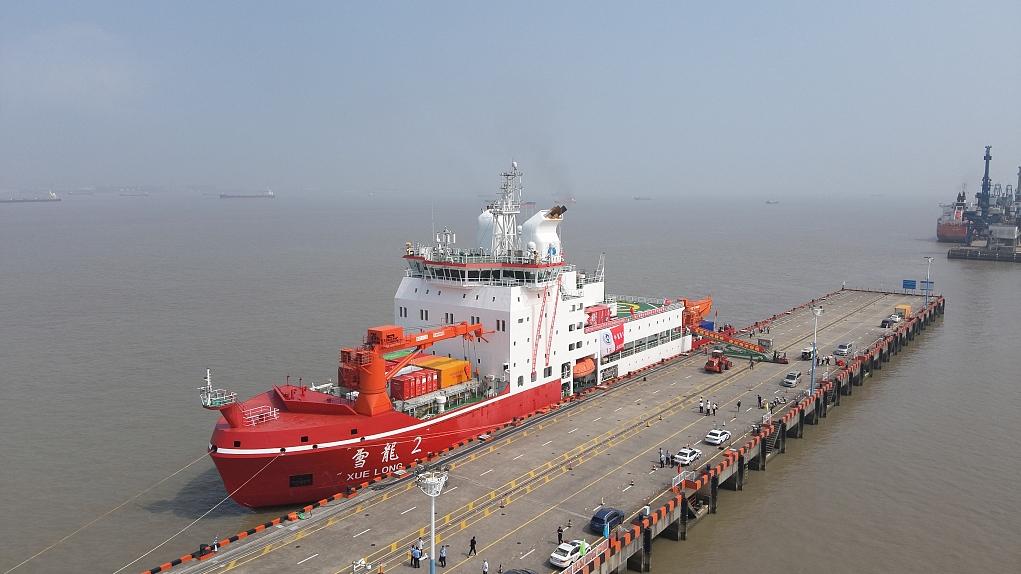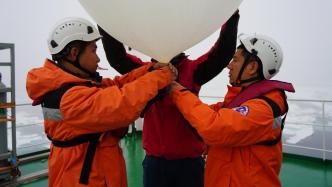

At noon on September 27, 2023, China's 13th Arctic Ocean scientific expedition team successfully returned to Shanghai aboard the "Snow Dragon 2" polar research ship. Visual China Map
Today (27th), my country's 13th Arctic Ocean scientific expedition team arrived in Shanghai aboard the "Snow Dragon 2" polar research icebreaker, marking the successful completion of various tasks of this Arctic Ocean scientific expedition and the successful conclusion of the expedition.
CCTV reporter Wang Nan: At noon on September 27, Beijing time, China’s 13th Arctic Ocean scientific expedition team successfully returned to the domestic base terminal in Shanghai aboard the "Snow Dragon 2" polar scientific research icebreaker. The scientific expedition lasted 78 days and covered a total voyage of more than 15,000 nautical miles.
This expedition focused on major scientific issues such as long-term monitoring of key environmental elements and mid-ocean ridge surveys in the Pacific sector of the Central Arctic Ocean, the Gak Ridge and the North Pole.
Chen Zhi, chief scientist of China's 13th Arctic Ocean Scientific Expedition: Our scientific expedition has obtained a large amount of data and samples, both in terms of long-term operational observation and monitoring and major national scientific research plans. Sea ice stress buoys, sea ice optical profiling buoys, and subgrid-scale buoy arrays were all tested in the Arctic Ocean for the first time. It helps us to have a refined understanding of the dynamics and thermodynamic processes of sea ice, and is of great significance to the further optimization and improvement of my country's sea ice model.
China's 13th Arctic Ocean scientific expedition achieved many new breakthroughs
It is understood that this Arctic Ocean scientific expedition has achieved fruitful results and achieved many new breakthroughs in independent equipment research and development and new technology applications.
According to reports, in terms of long-term monitoring of key environmental elements, a total of 49 comprehensive ocean surveys have been completed, 6 short-term ice stations and 1 long-term ice station operations have been completed, and sea surface meteorology, ice area sea ice and ship stress tests have been carried out. and other work, and obtained a large amount of effective data.
In terms of mid-ocean ridge survey, 8 operations including seabed seismic surveying and geological sampling were completed. At the same time, it successfully completed the deployment and recovery of 7 seabed electromagnetic meters and 5 seabed seismometers, of which the seismometer recovery rate was 100%, setting a new record for recovery in high-latitude dense ice areas. In terms of scientific research, 44 national science and technology plan projects such as sea ice and circulation have been completed. The first unmanned intelligent observation of sea ice thickness was carried out; the first multi-band synthetic aperture radar sea ice observation was carried out ; long-term continuous high-resolution ecological environment information was obtained to provide scientific data support for the rapid response of the Arctic Ocean ecosystem under the rapid changes in the Arctic.
